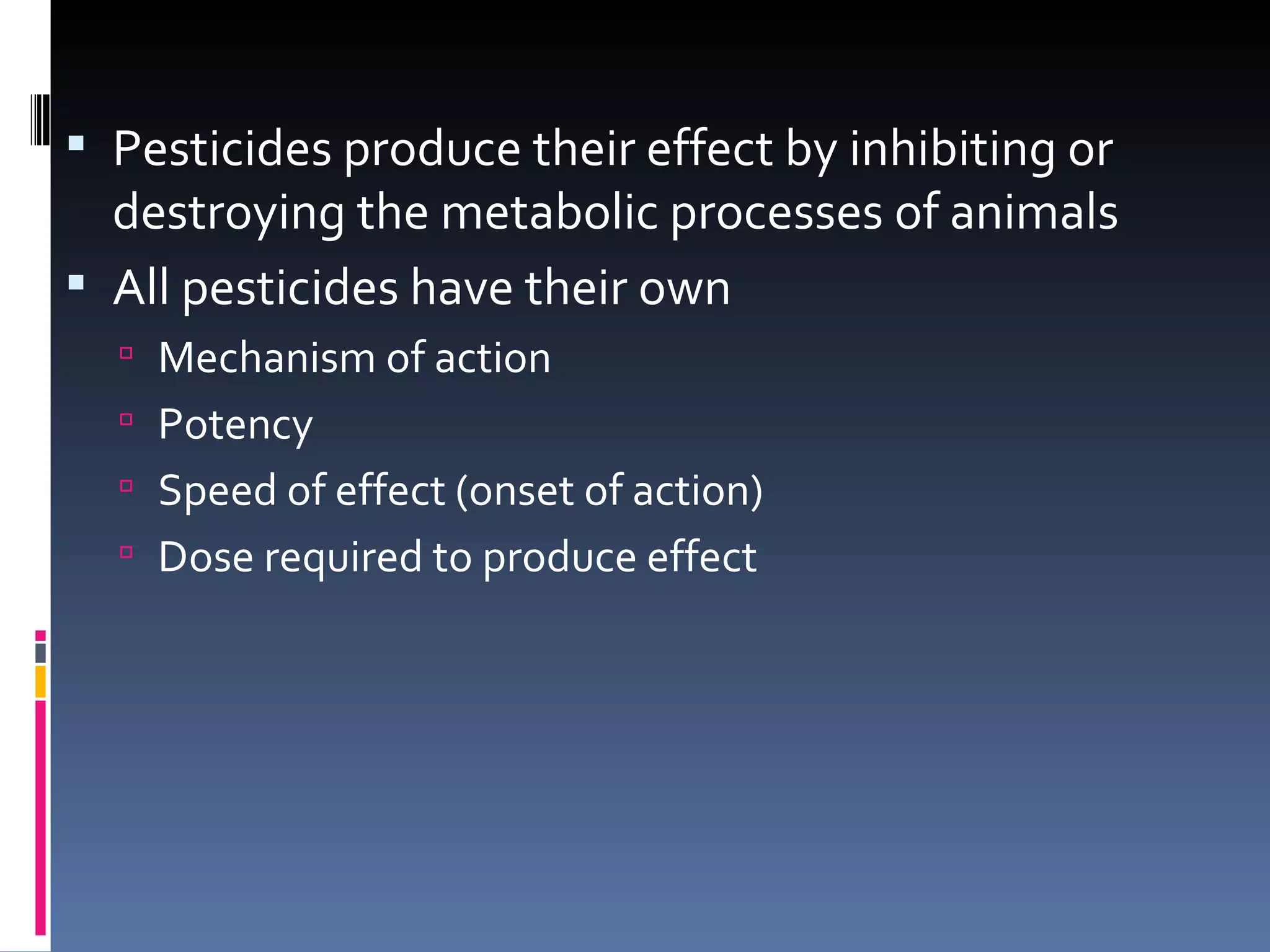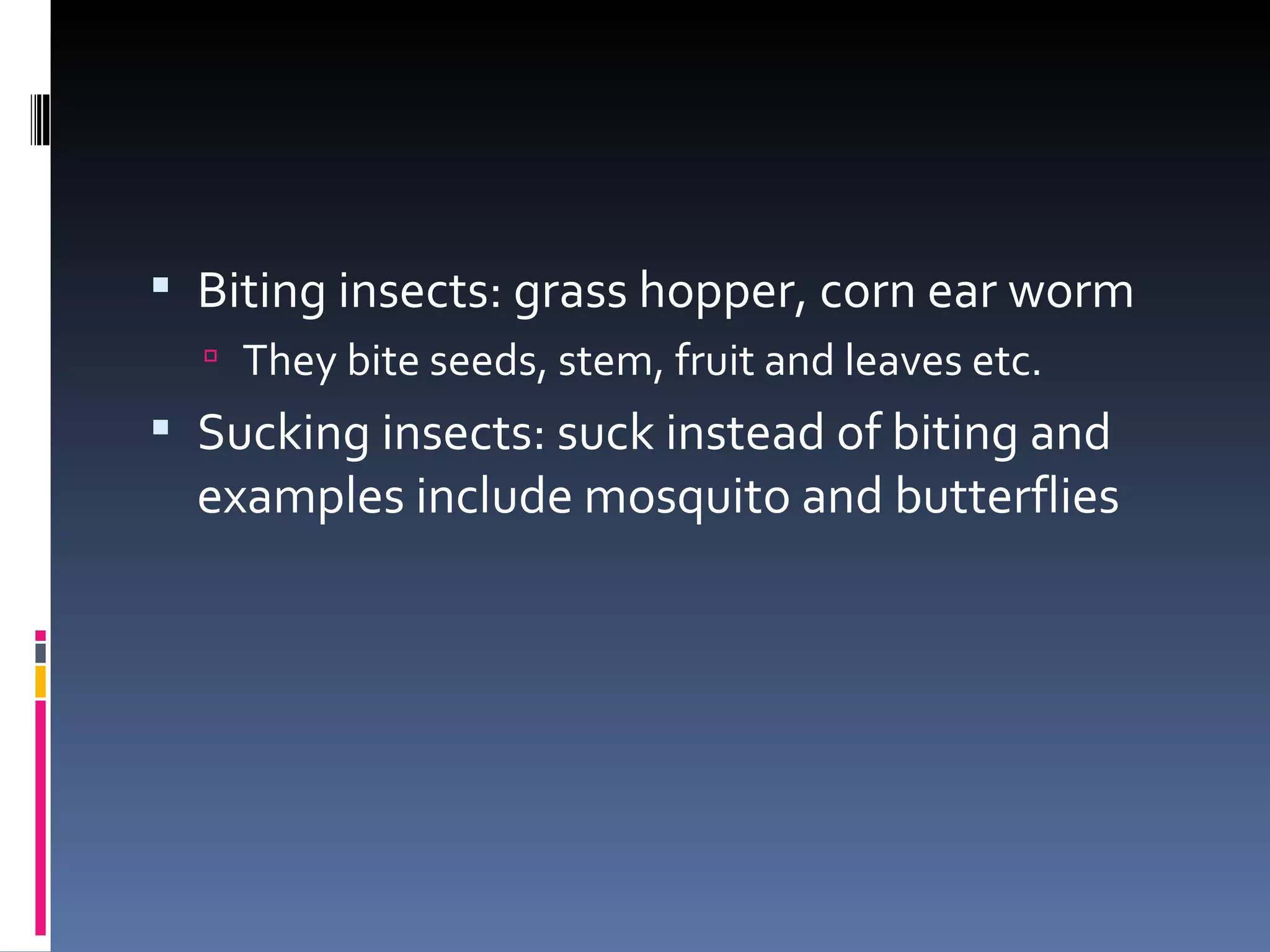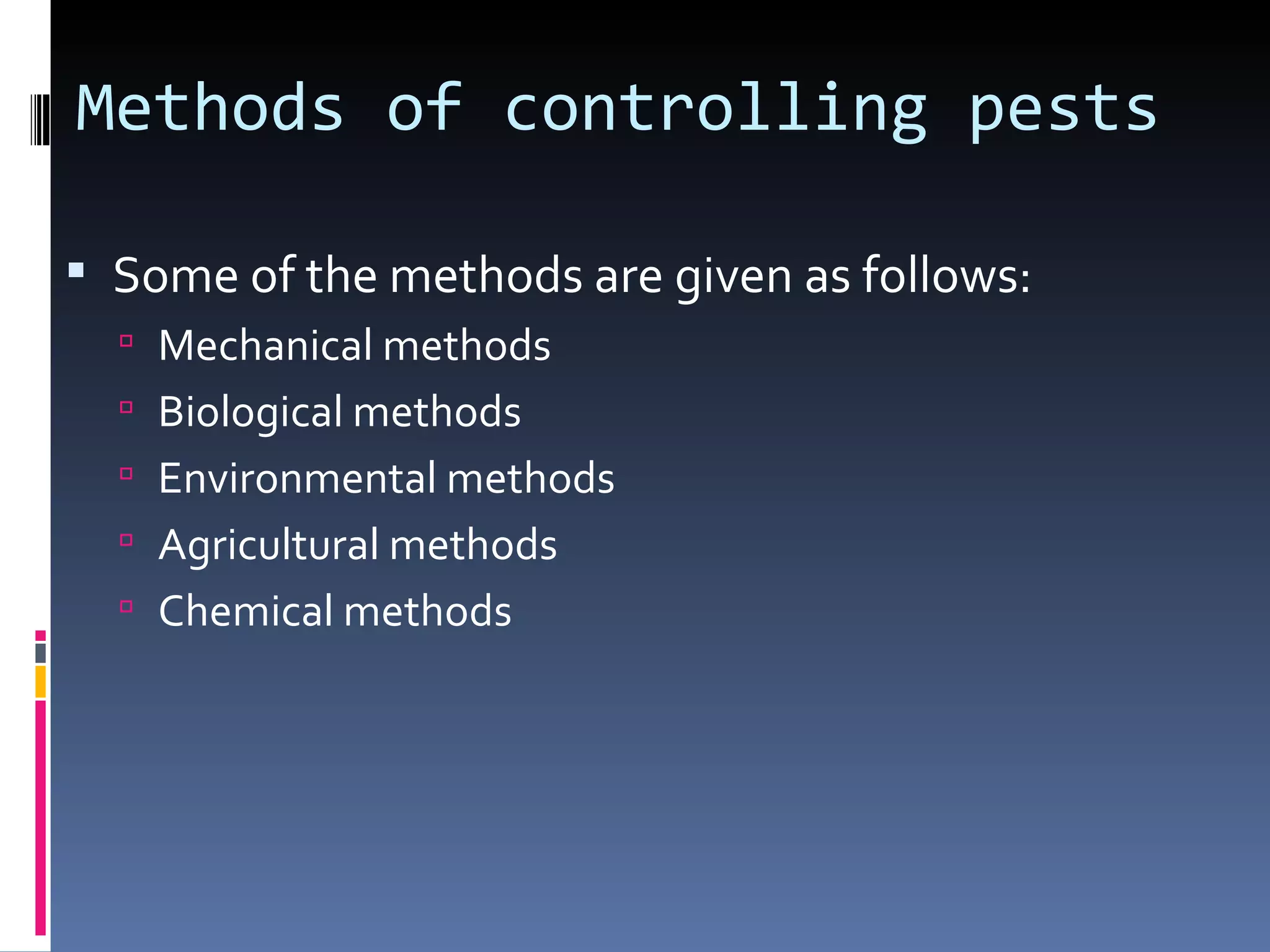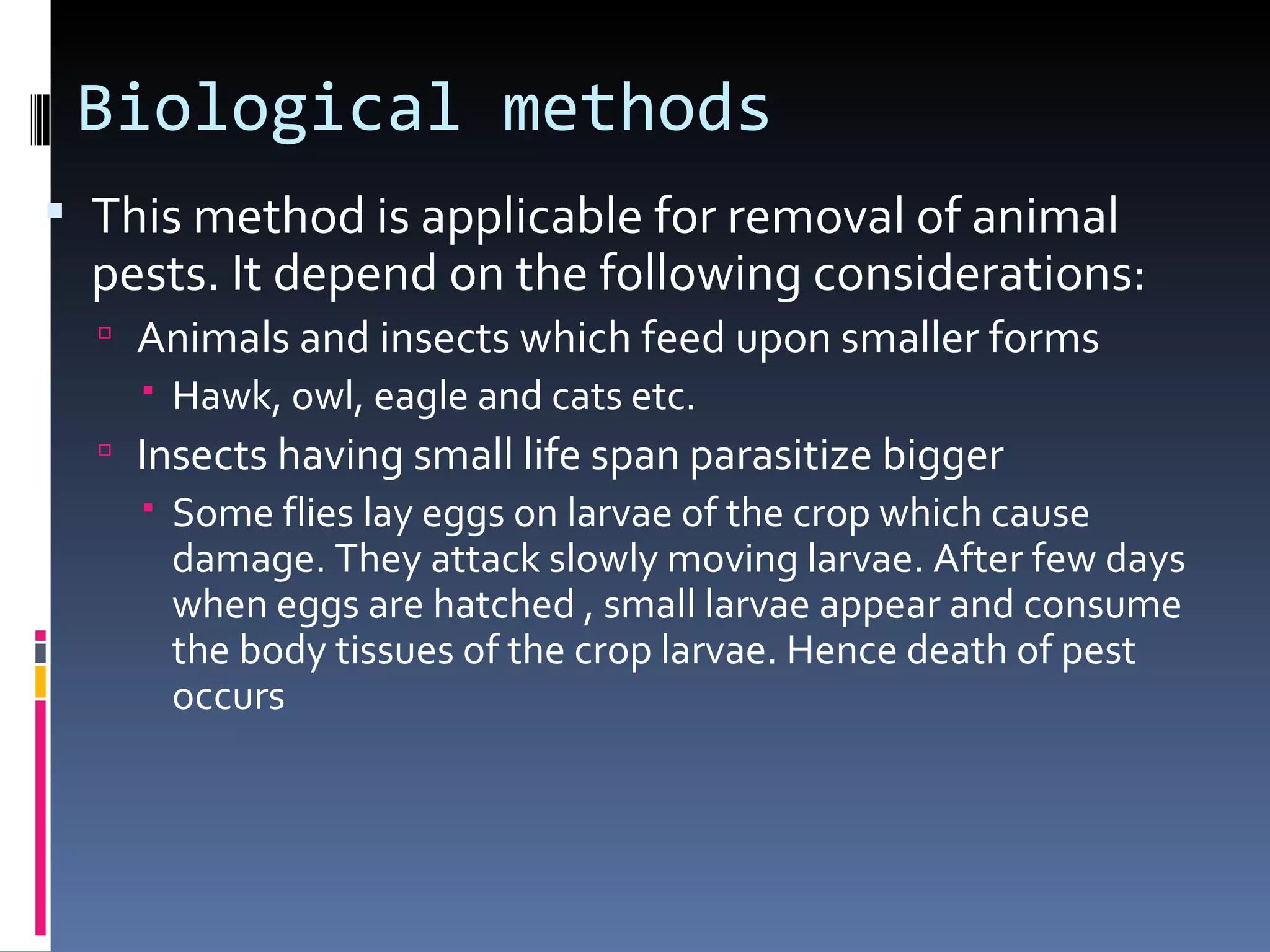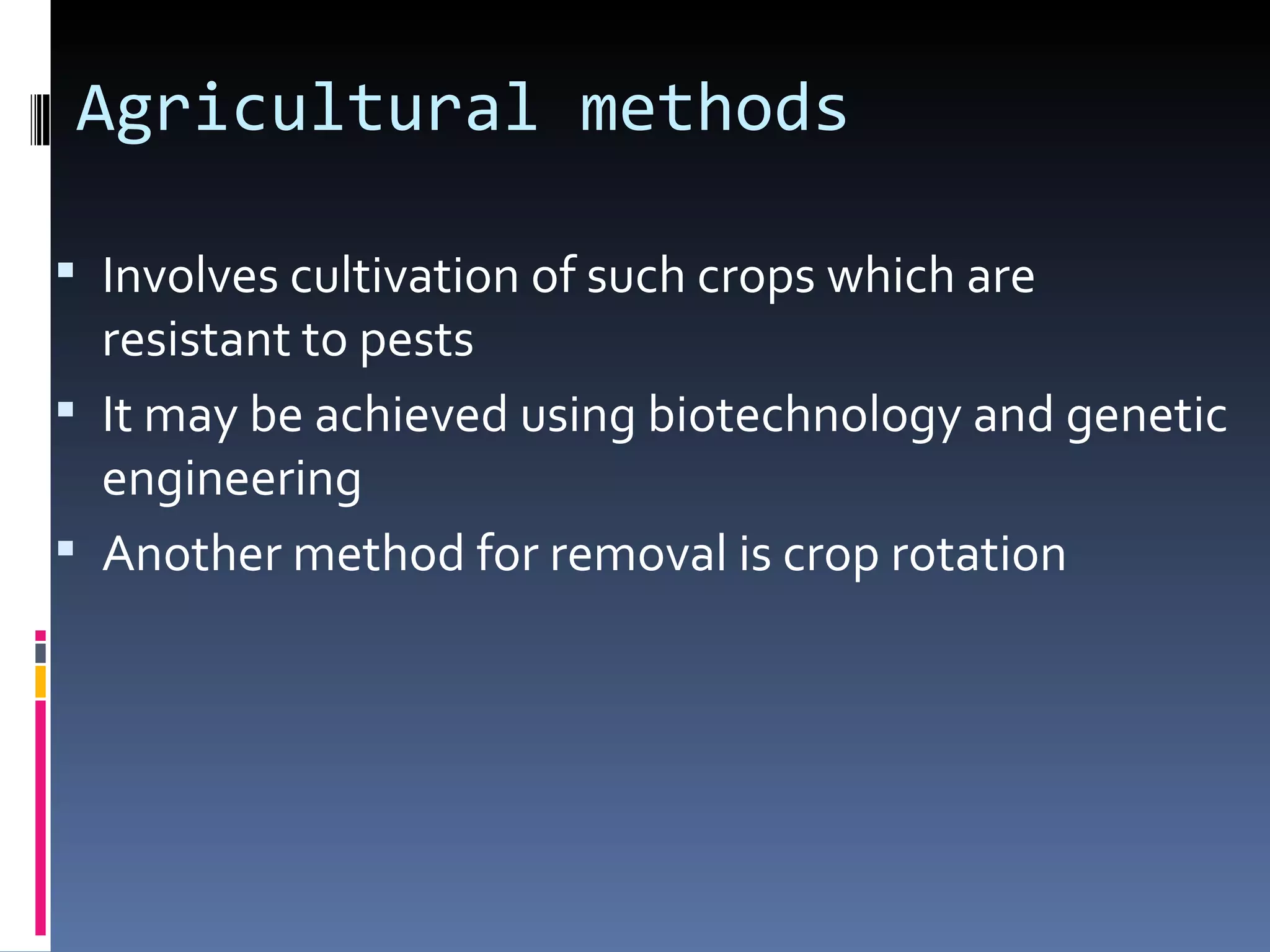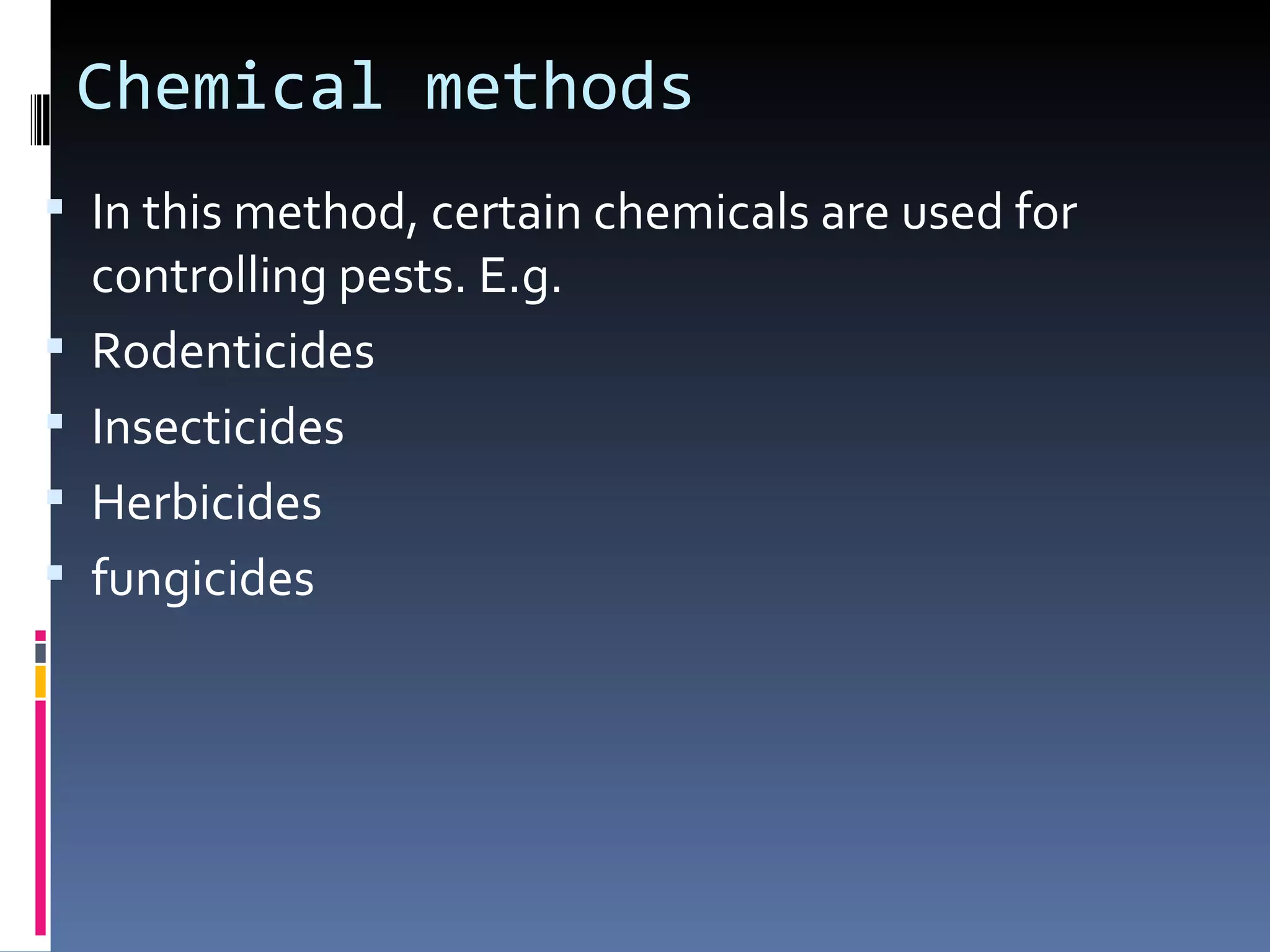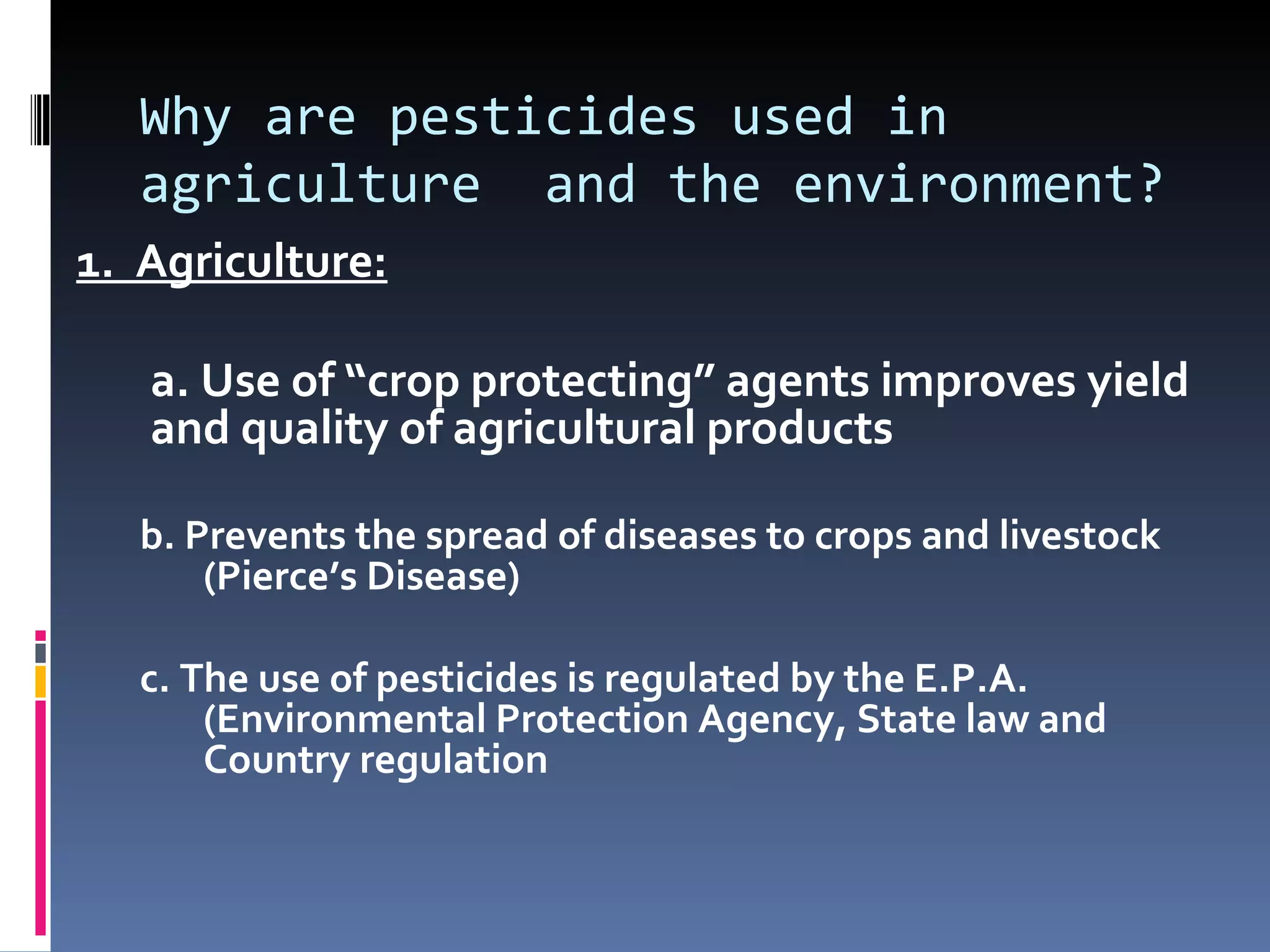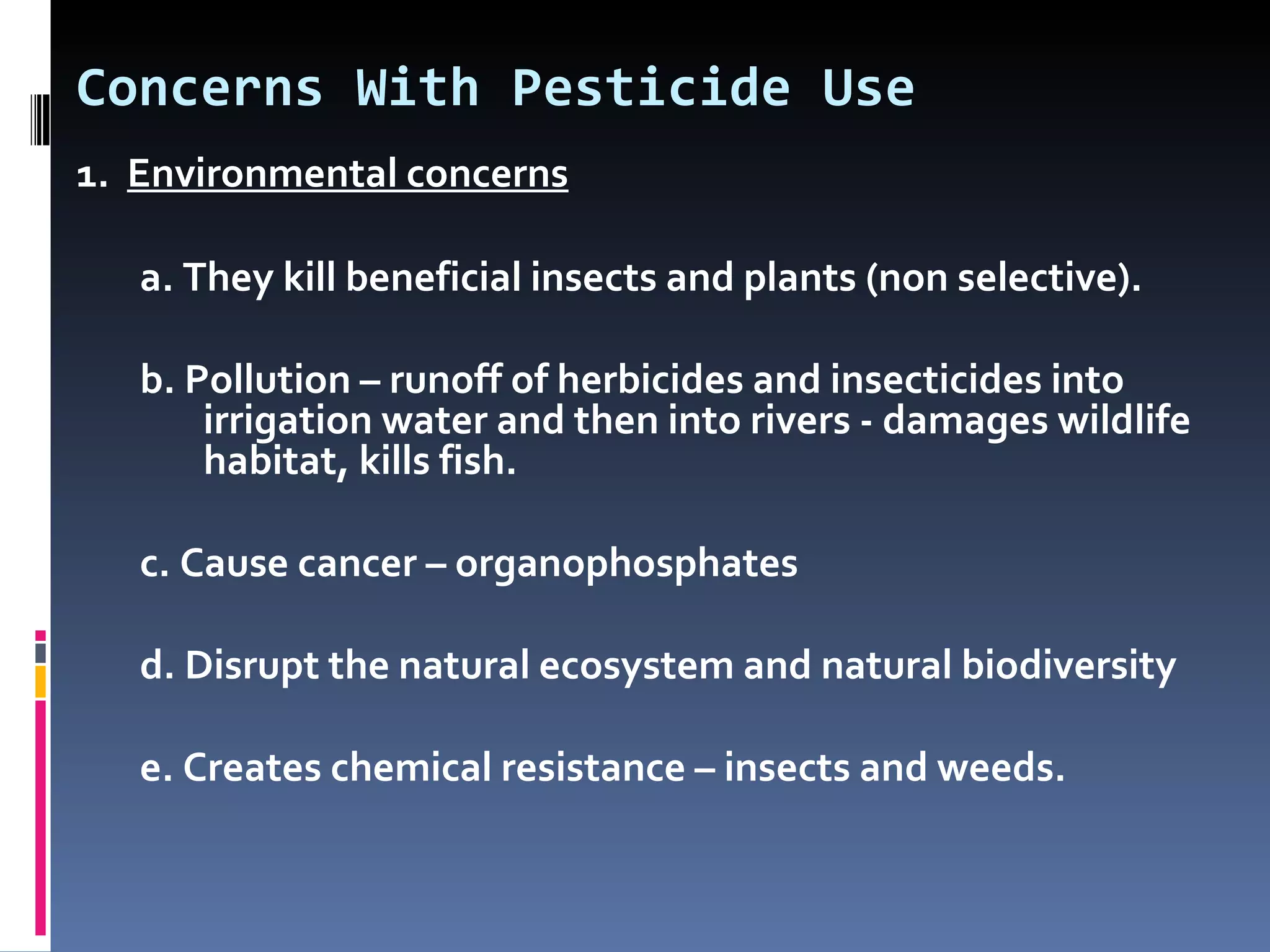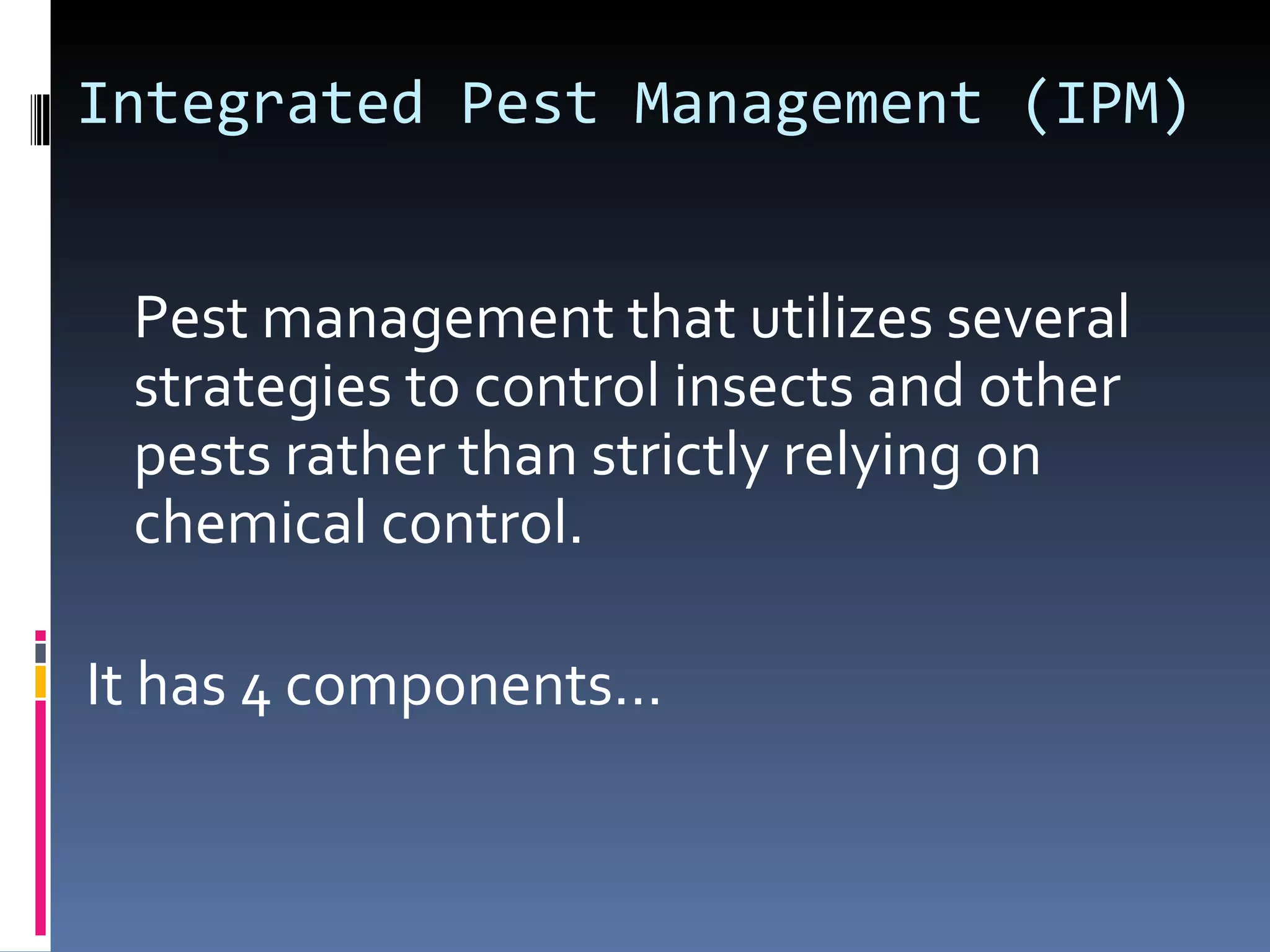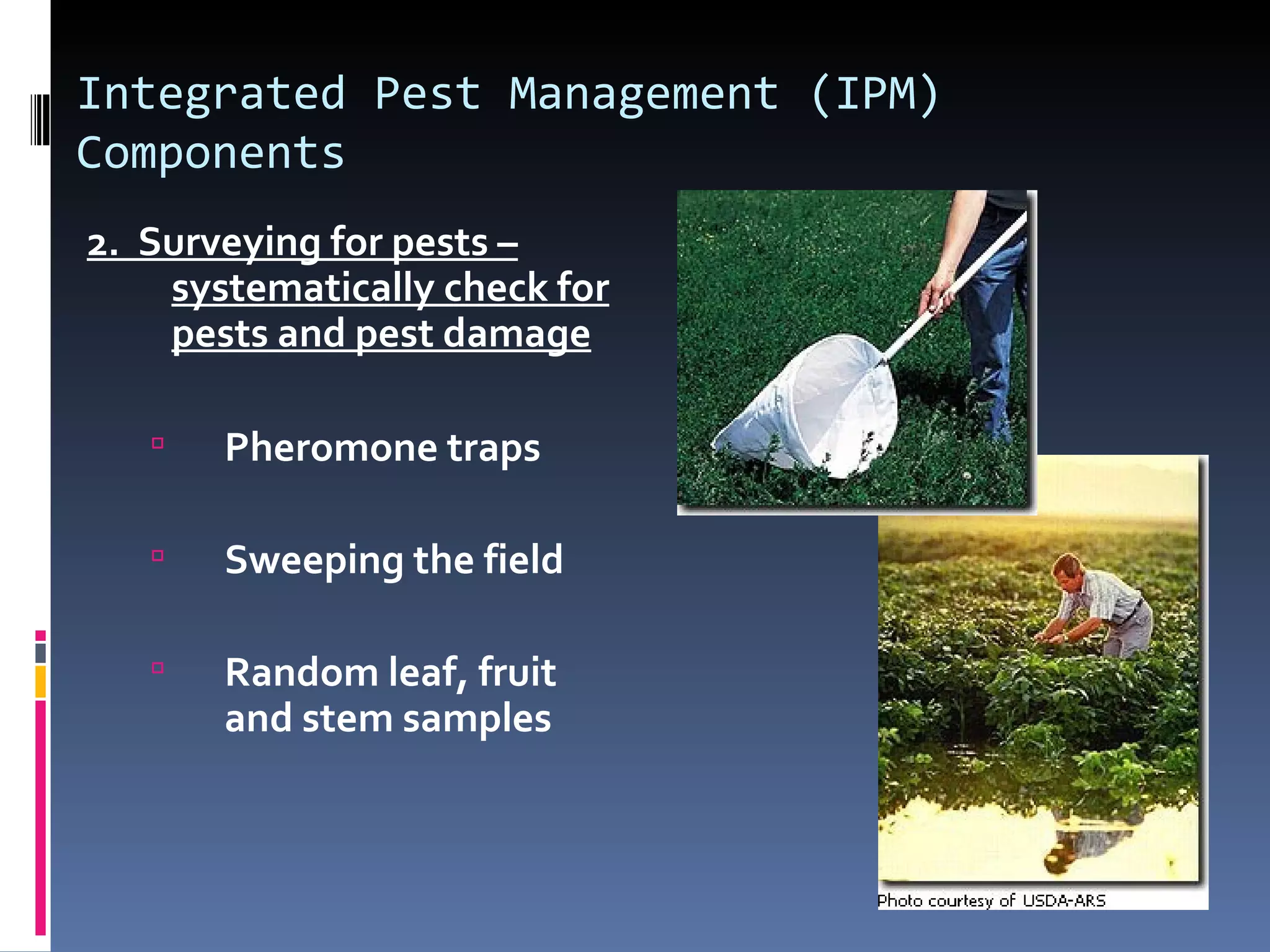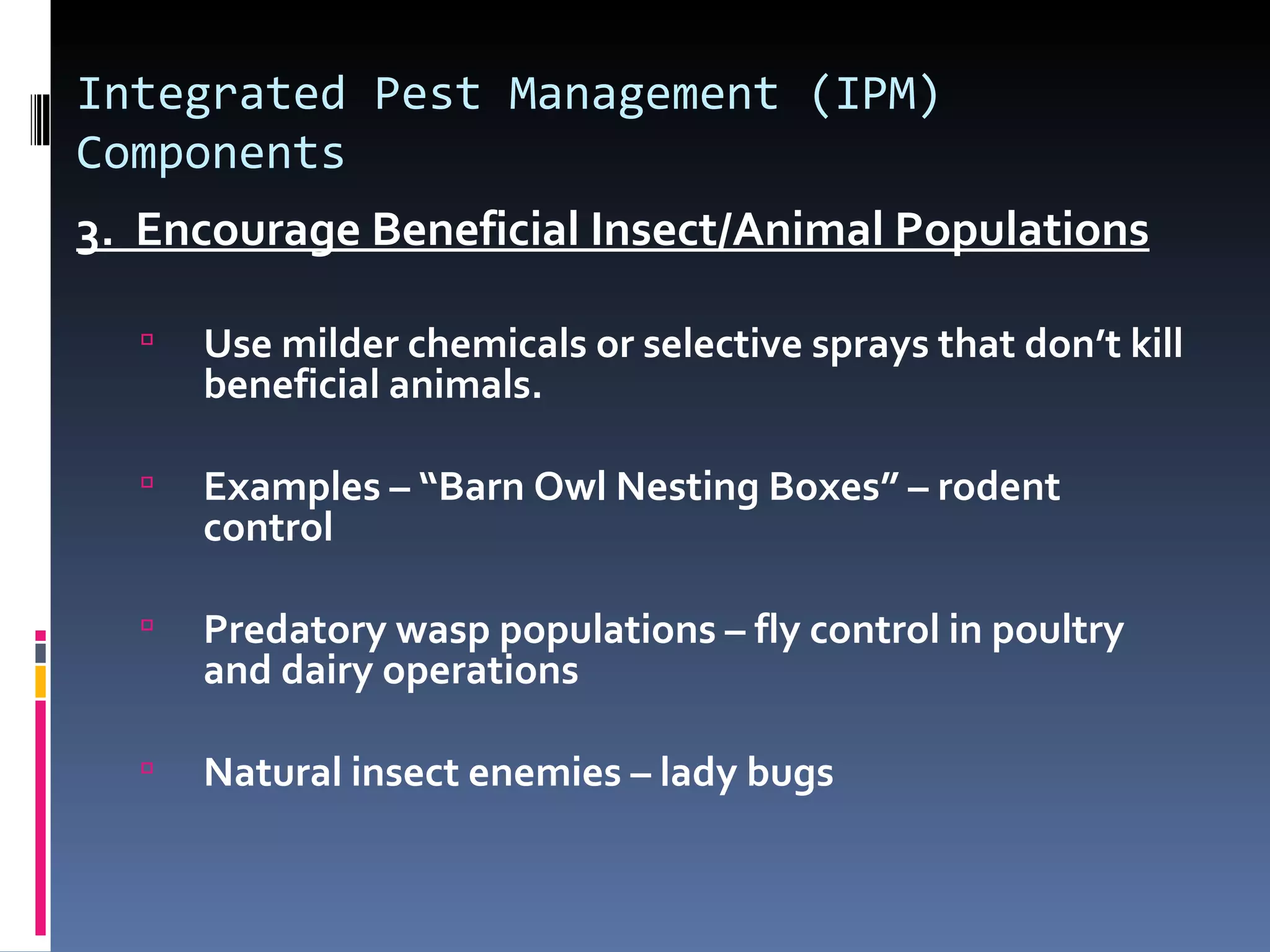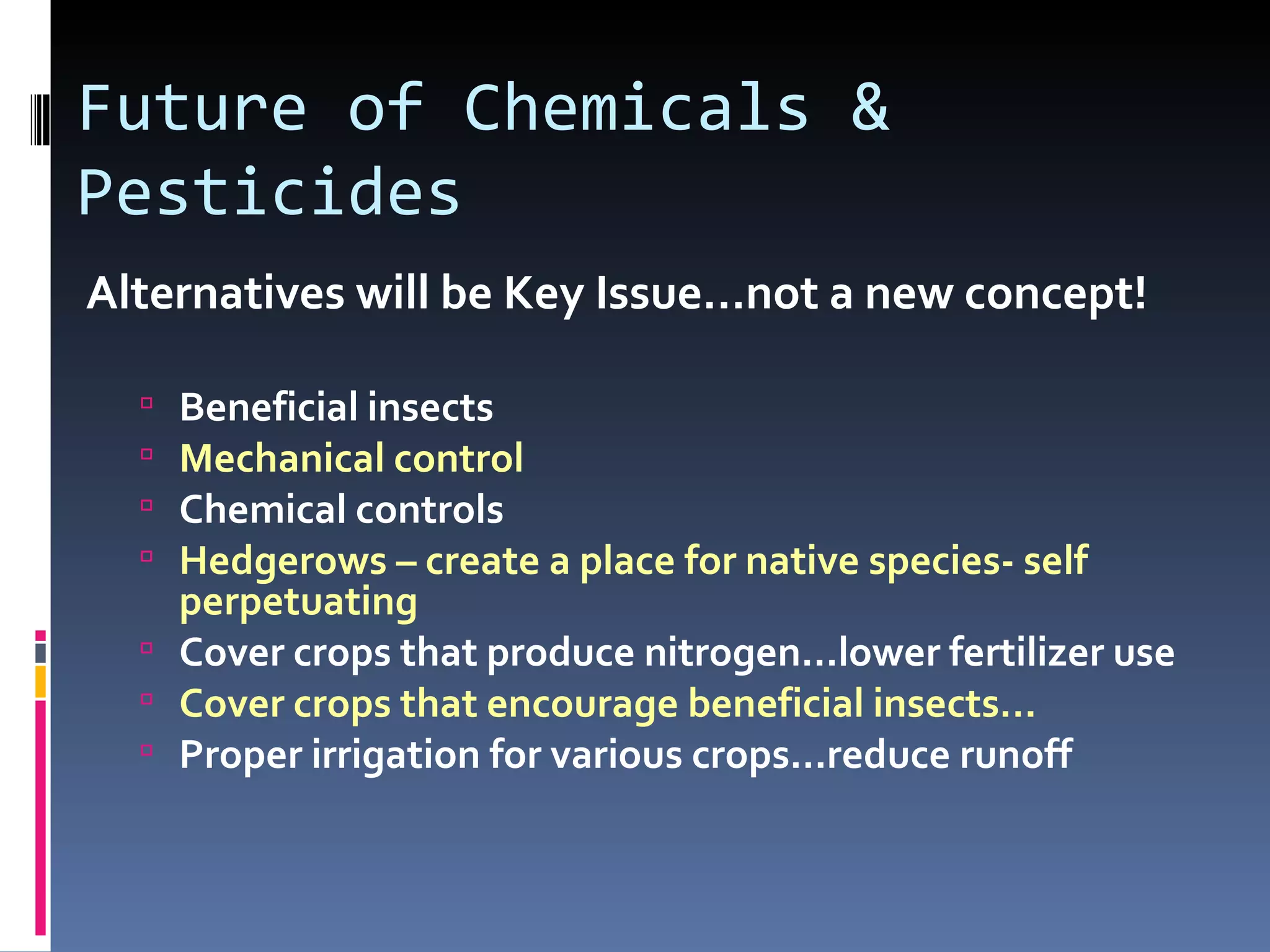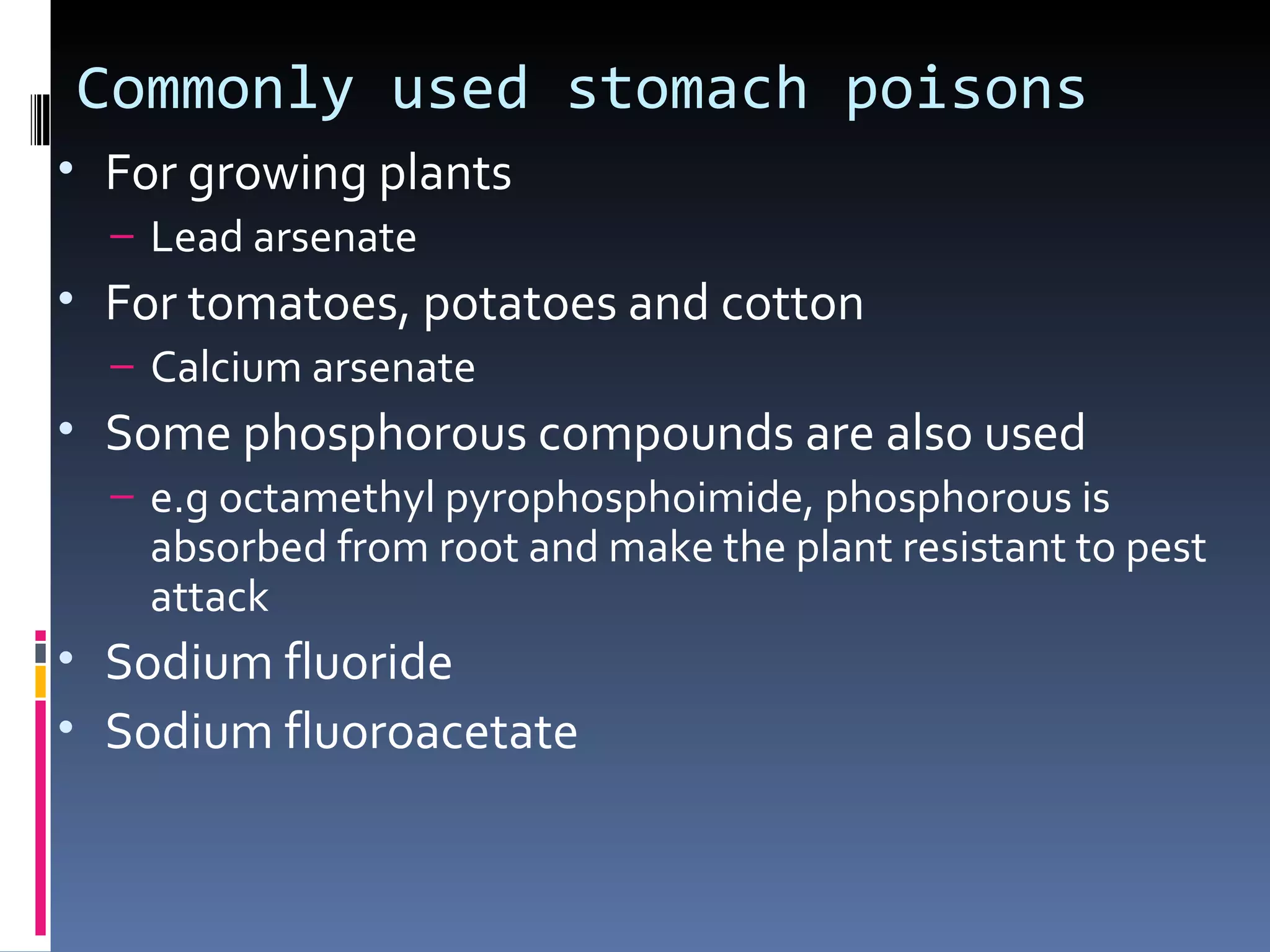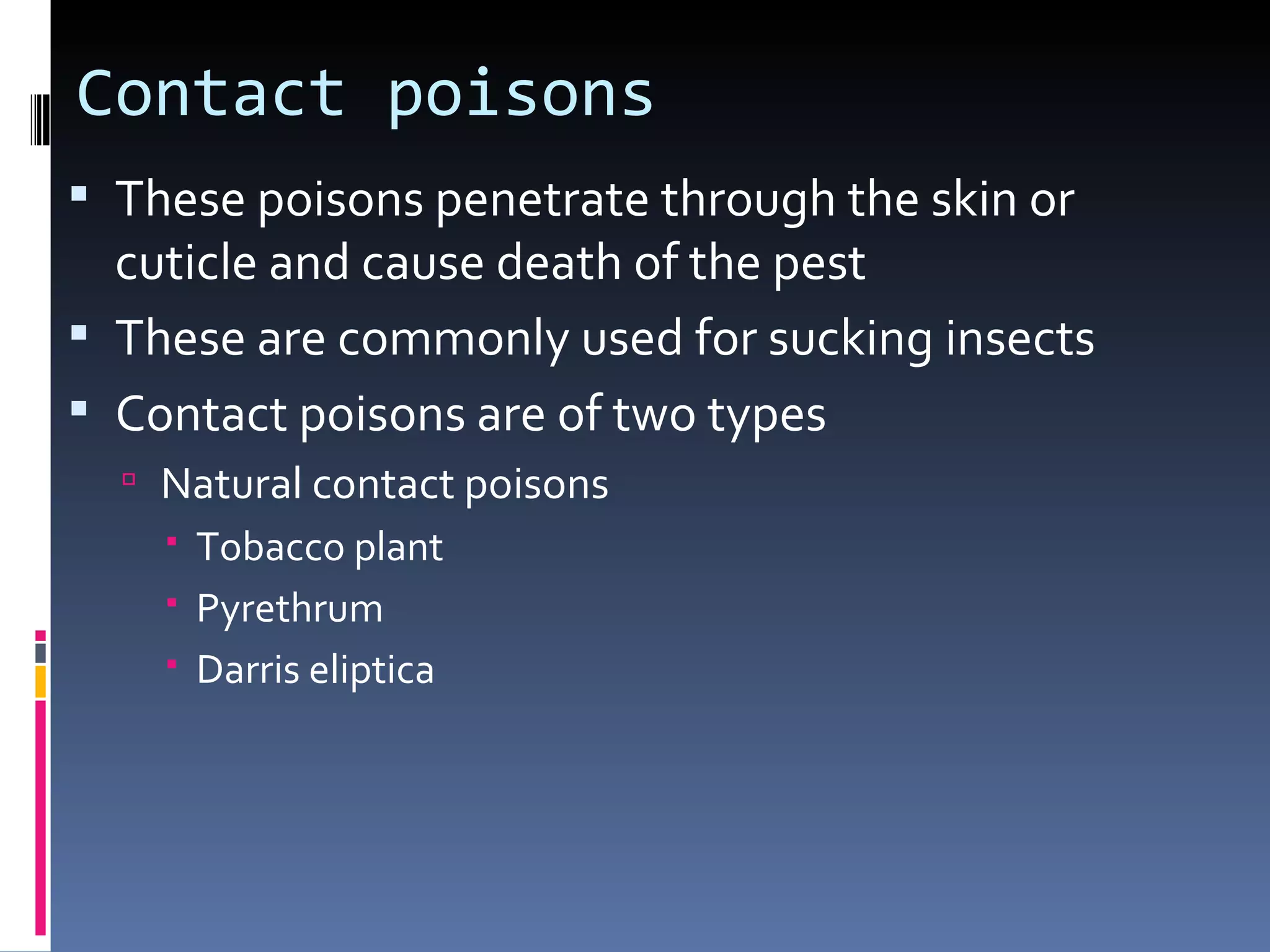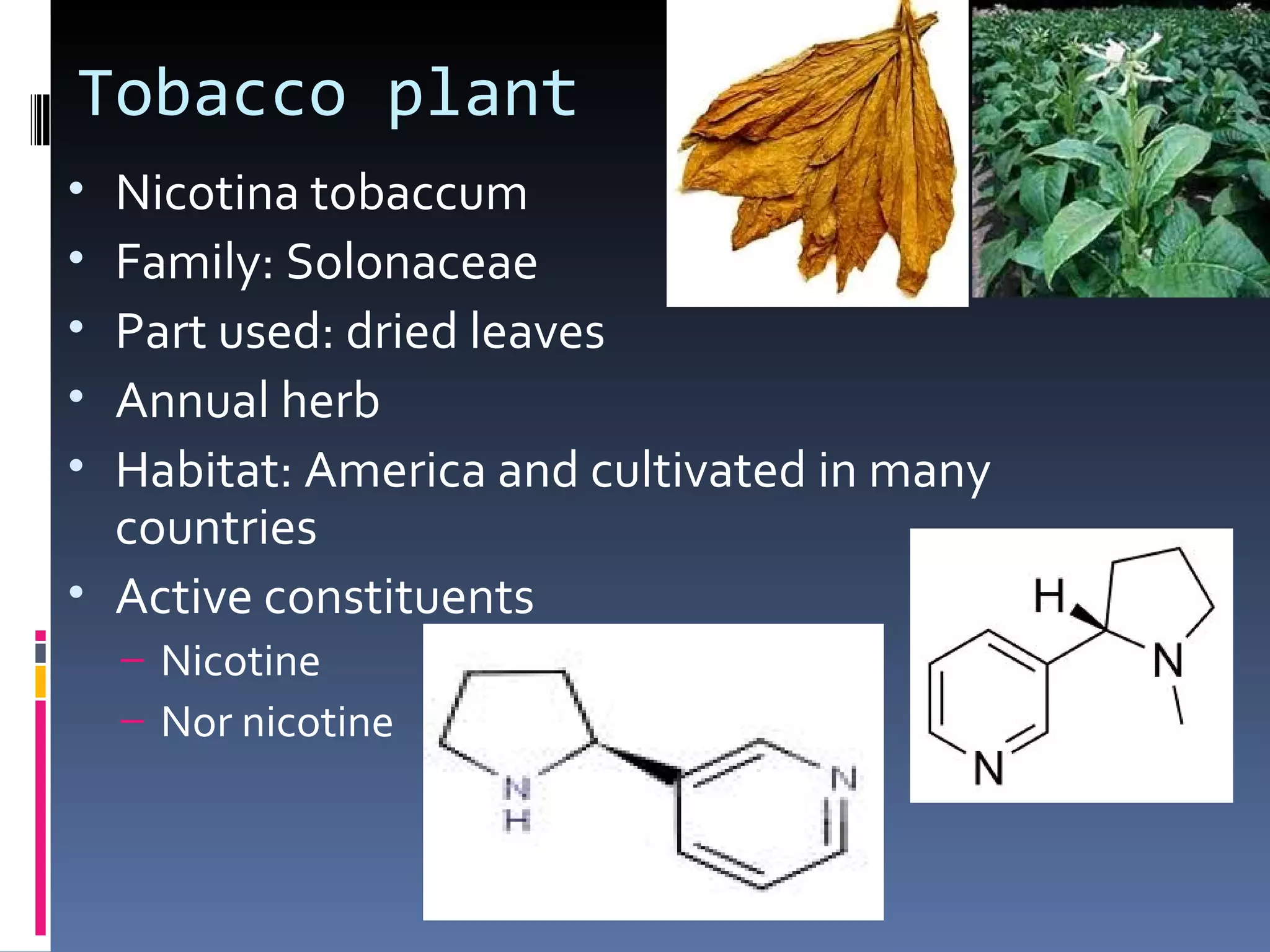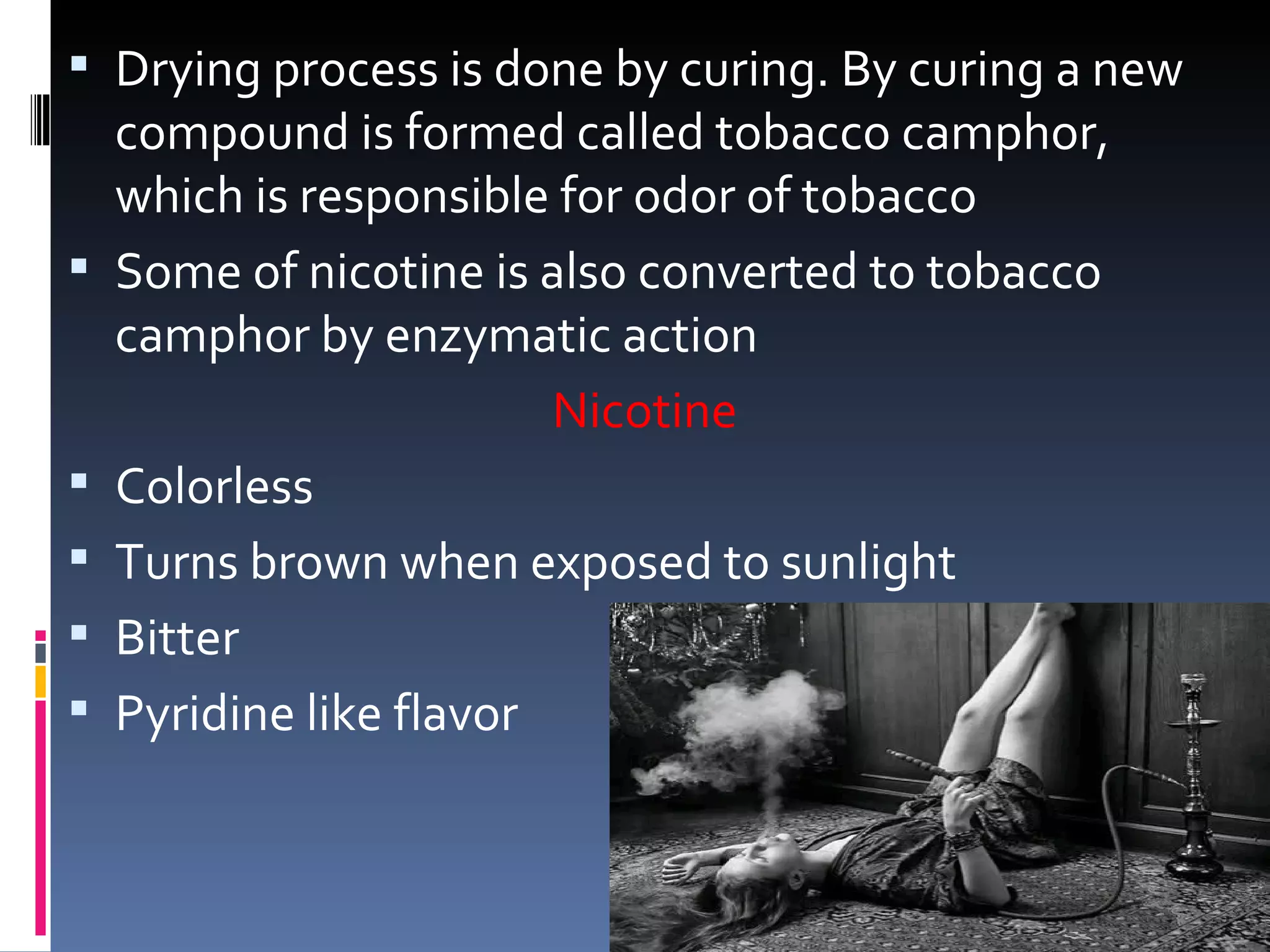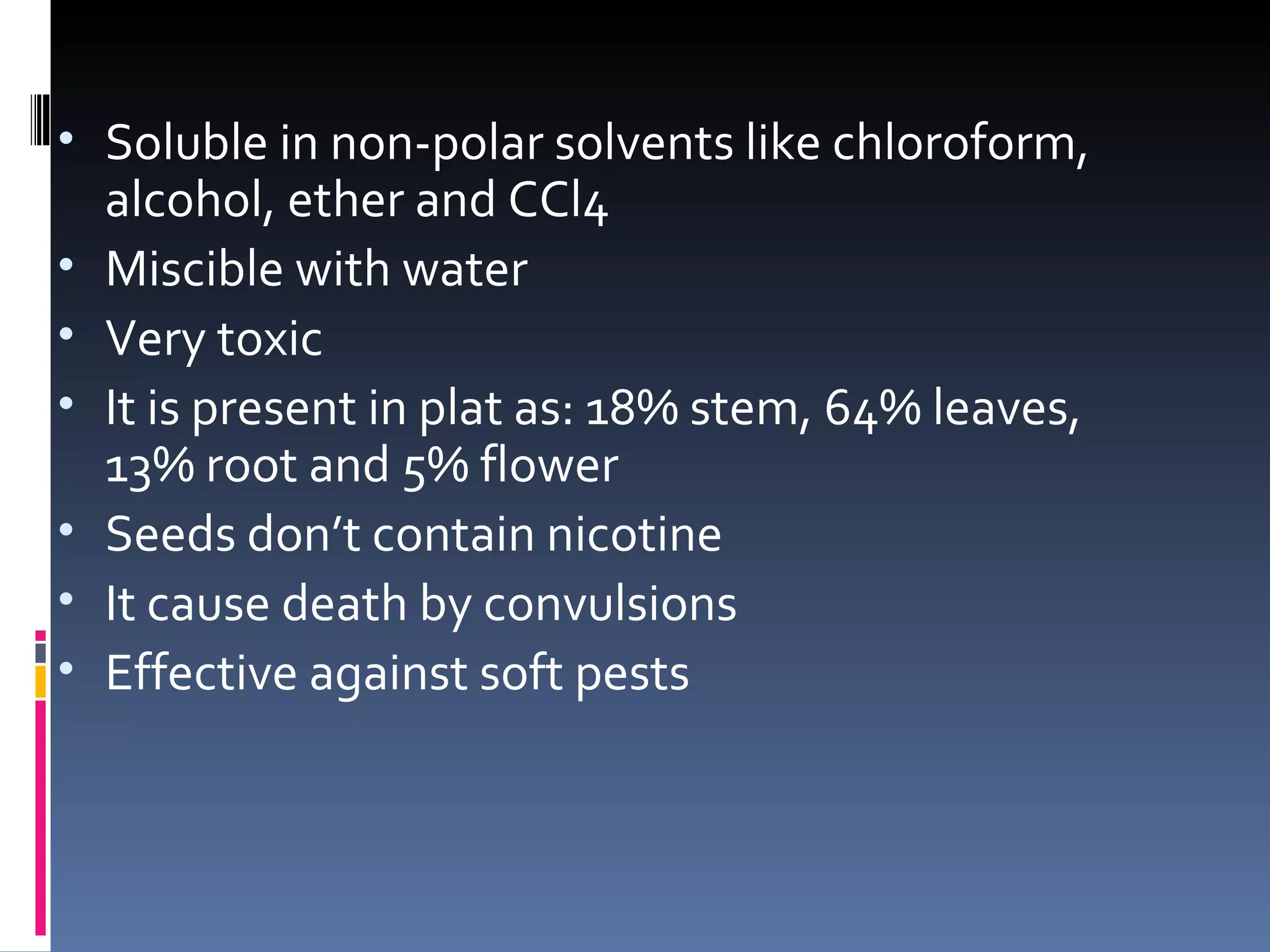This document defines pesticides and describes different types of pests including animal pests like rodents and insects, and plant pests like weeds and microorganisms. It discusses how pesticides work by inhibiting metabolic processes and outlines their mechanism of action, potency, onset, and dose. Common pesticide types include insecticides, herbicides, fungicides, and rodenticides. The document also covers pesticide choice based on pest type and habitat, as well as methods of controlling pests including mechanical, biological, environmental, agricultural, and chemical methods. Integrated Pest Management is discussed as an alternative approach.


